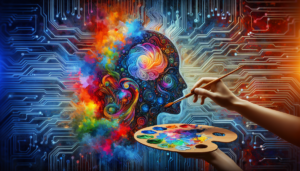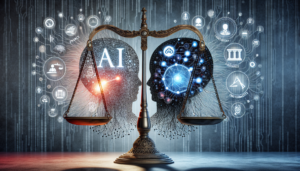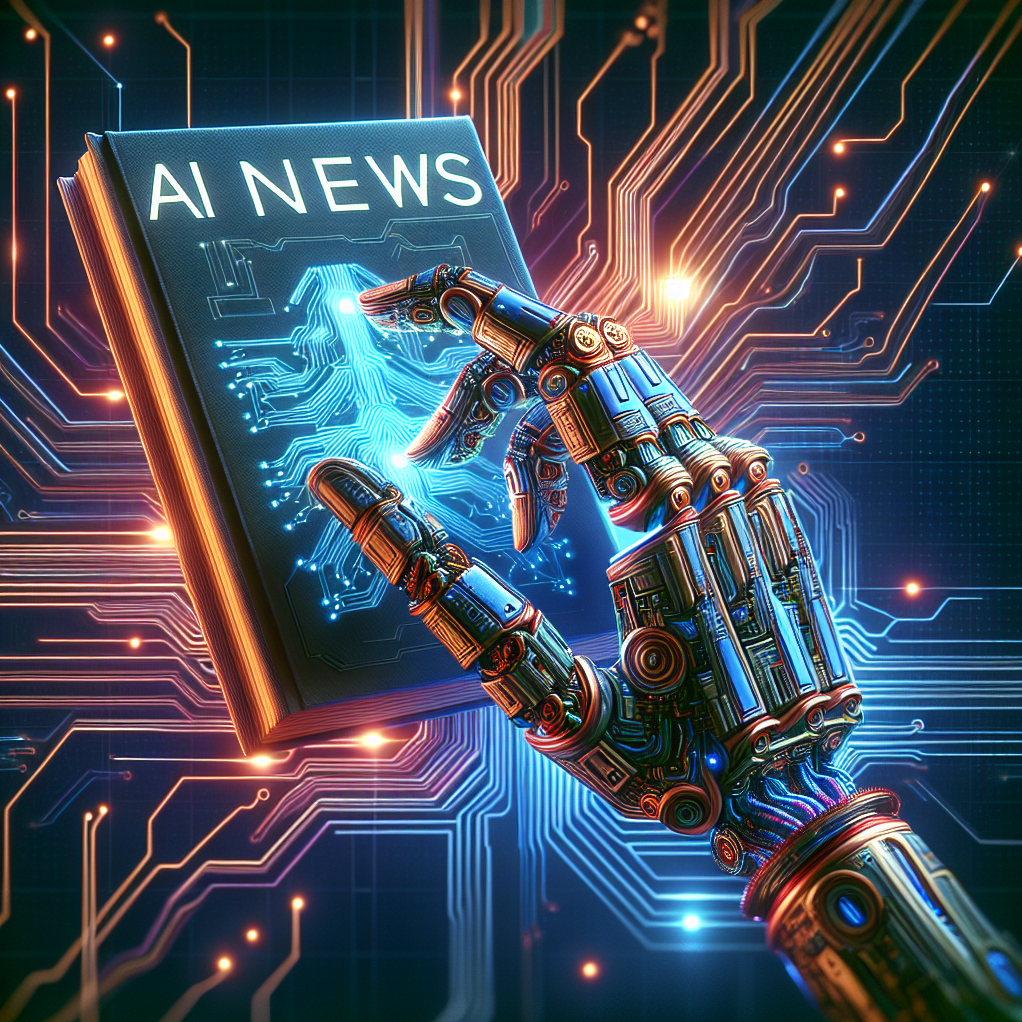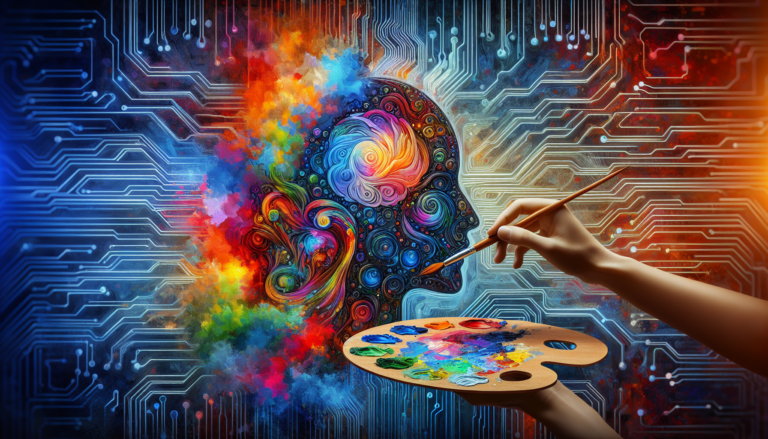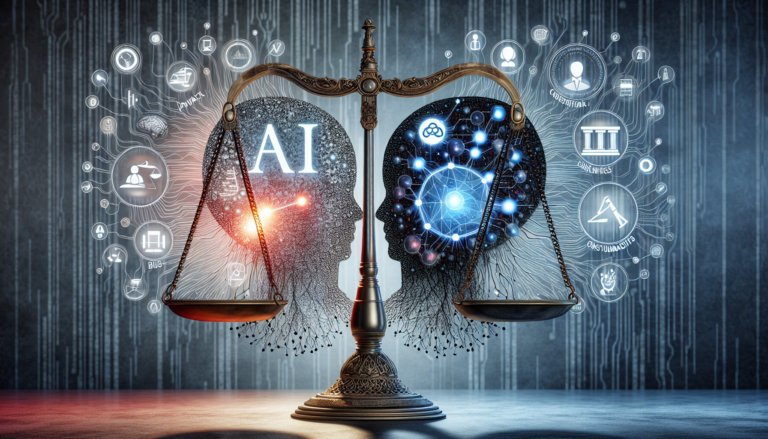AI has become increasingly prevalent in various industries, ranging from healthcare to finance. However, when it comes to education, implementing AI faces unique challenges. In this article, we will explore the obstacles that arise when integrating AI into educational systems and discuss potential solutions. From ensuring data privacy to addressing ethical concerns, we will examine how educators can navigate these challenges and effectively leverage AI for the benefit of students and teachers alike. Join us as we explore the exciting possibilities and potential hurdles of implementing AI in education.
Privacy and Security Concerns
Data protection
AI in education raises concerns about the protection of student data. With the use of AI, there is a need to collect and analyze large amounts of personal information such as grades, attendance records, and behavioral data. The challenge lies in ensuring that this data is securely stored and used only for its intended purposes. The potential risks include unauthorized access, data breaches, and the misuse of personal information.
Cybersecurity threats
Alongside data protection, the implementation of AI in education also brings about cybersecurity threats. Educational institutions must be vigilant in safeguarding their systems and networks from potential cyberattacks. With AI relying heavily on internet connectivity and cloud services, there is an increased risk of unauthorized access, malware, and other cyber threats. It is crucial to have robust cybersecurity measures in place to prevent these threats and ensure the safe and secure use of AI technologies.
Ethical implications
The use of AI in education raises ethical concerns regarding the privacy and autonomy of students. It is essential to strike a balance between the benefits derived from AI and maintaining ethical standards. There is a need for transparent policies and guidelines that ensure the responsible and ethical use of AI. This includes addressing issues of bias, discrimination, and the potential loss of human touch in education.
Lack of Infrastructure and Resources
Insufficient hardware and software
Implementing AI in education requires adequate hardware and software resources. However, many educational institutions may face challenges in acquiring and maintaining these resources. Limited budgets and outdated infrastructure can hinder the effective implementation of AI technologies, limiting its potential impact on education.
Inadequate internet connectivity
AI heavily relies on internet connectivity for real-time analysis, data storage, and accessing cloud-based services. However, not all educational institutions, especially those in rural or remote areas, have access to high-speed internet connections. The lack of sufficient internet connectivity poses a significant barrier to implementing AI in education, as it affects the availability and reliability of AI-powered tools and platforms.
Inaccessibility for disadvantaged communities
The lack of infrastructure and resources needed for AI implementation disproportionately affects disadvantaged communities. These communities may already face educational inequalities, and the limited access to AI technologies further widens the gap. It is crucial to address the inequities and ensure that all students, regardless of their socioeconomic status or geographic location, have equal opportunities to benefit from AI in education.

Resistance to Change
Educator reluctance
Resistance to change is a common challenge in any field, and education is no exception. Educator reluctance to embrace AI can hinder its effective implementation. Some educators may feel overwhelmed or intimidated by the use of AI, fearing job displacement or a loss of control over the learning process. Addressing this resistance requires providing educators with proper training, support, and opportunities to understand the benefits and potential of AI in education.
Fear of job displacement
The fear of job displacement is a legitimate concern in the implementation of AI in education. While AI technologies can enhance teaching and learning experiences, there may be concerns about the role of educators in this new landscape. It is essential to emphasize that AI is a tool to support, not replace, educators. By focusing on how AI can augment and enhance their roles, educators are more likely to embrace its implementation.
Lack of awareness and understanding
Another challenge is the lack of awareness and understanding about AI in education. Many educators, parents, and students may not fully grasp the potential benefits and limitations of AI technologies. Increasing awareness and providing comprehensive information about AI in education is crucial to overcome resistance. By fostering a better understanding, stakeholders can make informed decisions and actively participate in the implementation of AI.
Data Bias and Discrimination
Reinforcing existing disparities
AI systems are based on data, and if the data used is biased or incomplete, it can lead to further reinforcement of existing educational disparities. AI algorithms can unintentionally perpetuate biased outcomes, such as discriminatory grading practices or biased selection processes. It is essential to continuously monitor and address these biases to ensure fairness and equity in the use of AI in education.
Unfair evaluation of students
AI-powered evaluation systems can provide a more objective assessment of student performance. However, there is a risk of these systems inadvertently evaluating students unfairly. Factors such as the lack of cultural sensitivity or the inability to capture non-academic skills can result in inaccurate evaluations. It is crucial to ensure that AI systems used for evaluations are regularly reviewed, calibrated, and validated to minimize the potential for unfair treatment.
Lack of diversity and inclusion
AI algorithms are only as good as the data they are trained on. If the training data lacks diversity, it can lead to biased outcomes and perpetuate systemic inequalities. It is crucial to ensure that AI technologies in education are developed with diverse perspectives and input. This includes considering diverse cultural backgrounds, socioeconomic status, and learning abilities to foster inclusivity and avoid perpetuating existing biases.

Limited Personalization
Difficulty in adapting to individual learning styles
One of the promises of AI in education is personalized learning experiences. However, achieving true personalization can be challenging. AI systems must be able to adapt and cater to individual learning styles, preferences, and needs. This requires sophisticated algorithms and continuous feedback loops. The challenge lies in developing AI systems that can accurately identify and address the unique requirements of each learner.
Inability to provide tailored feedback
AI tools can enhance feedback mechanisms by providing immediate and personalized feedback to students. However, the challenge lies in developing AI systems that can offer meaningful and contextually relevant feedback. Providing constructive criticism and guidance requires a nuanced understanding of the learner’s goals, strengths, and weaknesses. AI needs to evolve to provide detailed and tailored feedback that supports student growth and progress.
Lack of human interaction and emotional support
While AI can offer personalized learning experiences, it may lack the human element crucial for emotional support and social development. Human interaction plays a vital role in shaping students’ emotional well-being and fostering social skills. Despite advancements in AI technologies, replicating the empathy, understanding, and nuanced guidance provided by human educators remains a challenge.
Reliability and Accuracy
Inconsistent performance of AI systems
AI systems are not infallible and can sometimes provide inconsistent results. Factors such as changes in data patterns or inadequate training can lead to fluctuations in AI system performance. This inconsistency can undermine students’ trust and confidence in AI-powered tools and platforms. Developing robust AI systems that are reliable and consistently accurate is crucial to maintain the integrity of AI in education.
Errors in data processing
AI relies on accurate and relevant data for effective analysis and decision-making. However, errors in data processing can occur, leading to erroneous conclusions or recommendations. Inaccurate data can result from various sources, such as human error, biased data collection, or algorithmic flaws. Ensuring the accuracy and reliability of data used by AI systems is essential to mitigate potential errors and bias.
Difficulty in handling complex tasks
While AI has made significant advancements in various areas, handling complex tasks in education remains a challenge. Tasks that require high-level reasoning, critical thinking, and creativity may go beyond the capabilities of current AI technologies. Striking the right balance between leveraging AI for routine tasks and preserving the human touch in complex educational processes is crucial for effective implementation.
Costs and Affordability
High implementation and maintenance expenses
Implementing AI technologies in educational institutions can be financially demanding. The costs include acquiring hardware and software, ensuring reliable internet connectivity, and providing training and support. Limited budgets and funding constraints can pose challenges for educational institutions in adopting AI on a large scale. Finding cost-effective solutions and exploring partnerships with industry, government, and nonprofit organizations can help alleviate this challenge.
Need for specialized training and expertise
To effectively utilize AI technologies in education, educators need specialized training and expertise. The challenge lies in providing comprehensive training programs that equip educators with the knowledge and skills required to leverage AI effectively. Ongoing professional development opportunities are vital to ensure educators remain up-to-date with the latest advancements in AI and can adapt their teaching practices accordingly.
Limited budget of educational institutions
Budget constraints are a major hurdle in implementing AI in education. Educational institutions often operate on limited budgets, leaving little room for investments in AI technologies. Adequate funding is necessary to acquire the necessary hardware and software, promote training and development initiatives, and support ongoing maintenance and upgrades. Securing financial resources and seeking alternative funding options can help overcome this challenge.
Ethical Concerns
Loss of human touch in education
Implementing AI in education can raise concerns about the loss of human touch in the learning process. While AI technologies can enhance efficiency and learning outcomes, the importance of human educators cannot be overlooked. Maintaining a balance between the benefits of AI and the human touch is crucial to ensure a holistic and student-centered approach to education.
Unequal access to AI-powered tools
The implementation of AI in education may exacerbate existing inequalities in access to educational resources. Not all students have equal opportunities to benefit from AI-powered tools and platforms. Limited access to technology, lack of internet connectivity, and socioeconomic disparities can create a digital divide. It is necessary to bridge this divide and ensure equal access to AI-powered educational resources for all students.
Dependency on AI for decision-making
Over-reliance on AI for decision-making in education can raise ethical concerns. AI systems are designed to augment decision-making, not replace human judgment. It is crucial to consider the limitations of AI technologies and take human factors into account when making important educational decisions. Ethical guidelines and policies should be in place to ensure that AI is used as a tool to support decision-making, guided by human expertise and values.
Safeguarding Student Well-being
Monitoring mental health and emotional state
AI technologies can play a role in monitoring students’ mental health and emotional well-being. However, the challenge lies in striking the right balance between providing valuable insights and preserving privacy. Ensuring proper protocols and safeguards are in place to protect students’ personal information and mental health data is critical. AI tools should be designed to respect students’ privacy and provide appropriate support while minimizing potential harm.
Ensuring child safety and protection online
As AI becomes integrated into online learning environments, ensuring child safety and protection becomes a significant concern. AI systems need to proactively identify and address potential risks, such as cyberbullying, inappropriate content, or online predators. Safeguarding mechanisms should be in place to protect students from online threats while still allowing them to benefit from the advantages of AI in education.
Addressing the impact of AI on social development
AI technologies have the potential to impact students’ social development, particularly in terms of interpersonal skills and empathy. The challenge lies in finding ways to complement and enhance social interactions rather than replacing them. Integrating AI in a manner that fosters collaboration, communication, and empathy is vital for maintaining the social and emotional growth of students.
Integration and Adaptation
Alignment with existing curriculum and teaching practices
Integrating AI into the education system requires alignment with existing curriculum and teaching practices. AI technologies should not be seen as separate entities but as tools that support and enhance the existing educational framework. Collaboration and dialogue between educators, curriculum designers, and AI developers are necessary to ensure seamless integration and alignment with learning objectives.
Training teachers to effectively utilize AI
To maximize the benefits of AI in education, teachers need to be equipped with the skills and knowledge to effectively utilize AI technologies. Providing comprehensive training programs and professional development initiatives is crucial to build teachers’ capacity in using AI tools. This includes training on how to integrate AI into lesson plans, effectively analyze AI-generated data, and harness AI for personalized learning experiences.
Managing the transition and overcoming resistance
The successful implementation of AI in education requires managing the transition process and overcoming resistance to change. Educational institutions need to develop clear implementation plans that address the concerns and challenges associated with AI adoption. Transparent communication, stakeholder engagement, and support systems are vital to address resistance and ensure a smooth transition. Building a culture that embraces innovation and continuous improvement is essential to overcome the barriers to AI implementation in education.
In conclusion, while AI holds enormous potential to transform education, its implementation faces several challenges. Privacy and security concerns, lack of infrastructure and resources, resistance to change, data bias and discrimination, limited personalization, reliability and accuracy issues, costs and affordability, ethical concerns, safeguarding student well-being, and integration and adaptation complexities all pose hurdles to overcome. Addressing these challenges requires comprehensive strategies and collaborative efforts involving educators, policymakers, technology developers, and the entire educational community. With careful consideration of these challenges, AI can be integrated effectively and ethically to enhance teaching and learning experiences and promote educational equity and inclusivity.





